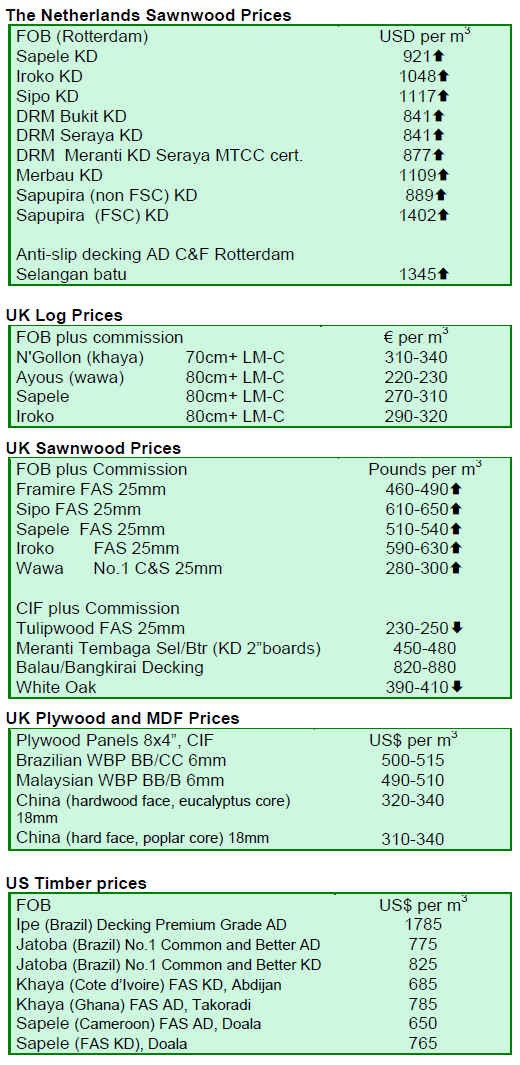The Timberland Blog ETF as Surrogate for Timberland Investment
Post on: 7 Сентябрь, 2015 No Comment

Thursday, February 14, 2008
ETF as Surrogate for Timberland Investment
In the Feb. 18th issue of Business Week, there is an article entitled Wood Paneling for Your Portfolio. I’ll start with a couple of quotes from the article and then I’ll disect them.
Buying timberland is one of the ways big guys running pension plans and endowment funds have diversified their holdings away from financial market trends and earned fairly stable double-digit returns to boot. But timberland has been mostly off-limits to individual investors, because it requires millions of dollars to buy in.
Enter the Claymore/Clear Global Timber Index ETF. It’s a new exchange-traded fund that invests in stocks of companies with the world’s greatest exposure to timberland. It amps up the exposure by weighting the 27 stocks in the portfolio not by market capitalization but by actual acres companies own.
This sort of everyman version of a timberland play.
Okay, that’s enough. I’ve been reading about this ETF as a surrogate for timberland ownership since its inception and I would like to say very LOUDLY and clearly that this is NOT a timberland play.
First, let’s consider the above quote timberland has been mostly off-limits to individual investors, because it requires millions of dollars to buy in. No it does not. Small tracts of timberland with all of the advantages of larger tracts are available for purchase. The use of a LLC allows investors to combine financial resources to acquire larger tracts. You can even purchase timberland within an IRA. Consulting foresters in all regions of the country are available to assist with appraisals and management. Many of these consultants are the same people assisting the institutional investors with timberland acquisition and management. If you want a timberland pure play, you will have to buy timberland and it is within the reach of most investors. If you want to get an idea of what is available for sale and pricing, just do a Google search on timberland for sale or consulting foresters in your geographic area of interest. If you want to learn more about buying small tracts of timberland, you might want to buy and read Curtis Seltzer’s How To Be a DIRT-SMART Buyer of Country Property . There is a lot of info in it that can put you on the right road. Before you buy, you will still need a consulting forester or someone else very familiar with timber values, land productivity and the local market. If you want to delve into the concept of timberland as an investment, I’d recommend Timberland Investments by Chris Sinkhan, et. al. which is pretty much the classic in that field.
So, no, you don’t need millions of dollars to buy timberland!
Now let’s look at the Claymore/Clear Global Timber Index ETF and see why it is not an everyman version of a timberland play. To be fair to Business Week, they are not the only ones promoting this ETF as a surrogate for owning timberland. I have seen at least a dozen articles with similar comments.
Below is a list of the holdings in the Clear Global Timber Index along with the percentage weighting of each. As you scroll down through the list, ask yourself the following questions.
- Is the primary asset of this company timberland?
Clear Global Timber Index
Top Fund Holdings as of 2/13/08
INTERNATIONAL PAPER CO/5.48%
VOTORANTIM CELULOSE E PAPEL SA/5.46%
ARACRUZ CELULOSE S.A. ADR/5.17%

MEADWESTVACO CORP/4.49%
SMURFIT KAPPA GROUP PLC/4.28%
GRUPO EMPRESARIAL/3.76%
CHINA GRAND FORESTRY RESOURCES/3.22%
DELTIC TIMBER CORP/2.71%
WEST FRASER TIMBER CO LTD/2.67%
HOKUETSU PAPER MILLS LTD/2.48%
GREAT SOUTHERN PLANTATION/2.13%
CANFOR CORP/1.25%
TIMBERCORP LTD/1.21%
If you answered the questions, it should be very clear that this index is NOT a timberland play but in many cases, it is just the opposite. For example, as timber and timberland prices increase, you would expect the value of the index to increase as well. Here is a quote from MeadWestvaco’s news release following its last quarter.
Higher input costs for wood. negatively impacted profitability.
The corporate structure of many of the key holdings above is very similar to that of MWV. This ETF may be a good investment, I can’t say, but it is certainly NOT a surragate for timberland ownership. It reflects a global pulp and paper play.
So. is it possible to invest in stock as a timberland play? Maybe, kind of, in a way. At a minimum, we can do a heck of a lot better than this ETF. We’ll do it by creating a basket of stocks from the above list that really are backed up by timberland and that have little or no exposure to pulp and paper. Let’s also eliminate the bulk of the foreign stocks which, to a degree, have currency exchange risk associated with them (You may think that the dollar will continue to decline so they will be a good investment but that is not timberland investing, that’s currency investing — then again, you might think that the dollar is about to turn around. ).
Let’s start by putting check marks by Plum Creek, Potlatch and Rayonier. All have significant timberland acreage, little or no exposure to pulp and paper, and a tax efficient corporate structure (REIT). The timberland in these three stocks provides plenty of geographic, species and market diversity. That diversity substantially reduces many of the risks associated with both timberland and stock investing. I believe that this basket will come as close to owning timberland as you can get. If you want to add a few more, consider Deltic Timber (timberland and lumber mills), Pope Resources (a MLP), and Weyerhaeuser (six million acres but pulp and paper, lumber mills, currency risk, and inefficient tax structure). Weyerhaeuser is a particularly interesting addition because its current market cap is less than estimates of the timberland value. In addition, a probable change in the tax structure will likely result in a significant increase is share price. So let’s create a basket with three to six of these stocks and forget the ETF. It will be more reflective of a timberland investment.
But remember, too, that it is NOT timberland. It is stock — be that good or bad. On the positive side, the stock basket is much more liquid than a timberland investment. The stable, continuously rising value of timberland will be absent. Daily values will change with the stock market. Value will rise and fall with major market influences like housing. Quarterly profit will impact the stock price (no matter how foolish). Last week an analyst reported that Potlatch was a better buy than Plum Creek. I checked the stock prices for the two of them and Potlatch was up about 3.5% and Plum Creek was down by 3.5%. The value of the timberland at neither company had changed one penny but the difference in value of the two companies was 7%! These types of moves may be foolish but they are also reality.
So. this may raise a couple of questions in your mind. First question: How can we do a better job at selecting stocks to kind of mirror timberland investments than a professional investment firm like Claymore? Answer: Due to laws and regulations that apply to mutual funds and ETF’s, they are restricted from taking a position that exceeds 5% of the fund. That means that they must take a bare bones number of 20 different companies in the ETF and there are not 20 companies out there that even approach being true timberland plays. We win not because we are better but because we are blessed with more flexiblity.
Second question: How could Business Week’s assesment be so far off? Answer. —Brian














